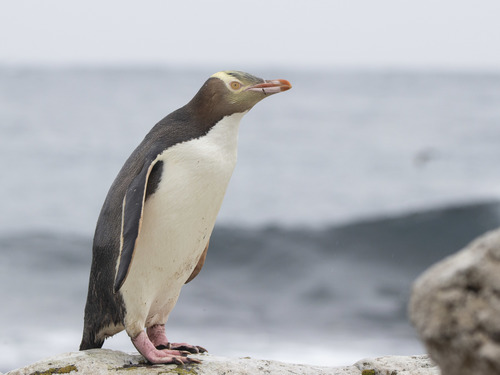
Yellow-eyed Penguin
Meet the Yellow-eyed Penguin, Megadyptes antipodes, a shy, solitary dweller of New Zealand's coastal forests. Its striking yellow eyes and head band set it apart. A key player in its ecosystem, this penguin's monogamous bonds and distinct braying call add to its fascinating allure.
10-20 years
Lifespan
45420.0 kg
Weight
Height: 60 - 75 cm
Size
Brown, Grey, Yellow, Black, White
Color
Endangered
Conservation Status
Decreasing
Population Trend
Characteristics
The Megadyptes antipodes, commonly known as the Yellow-eyed Penguin, is native to New Zealand. This medium-sized penguin is distinguished by its pale yellow eyes and yellow head band. It inhabits forested and shrubland areas near sandy beaches and is known for its shy, solitary nature. They are monogamous and have a unique braying call.
Distribution Range of the Yellow-eyed Penguin
The Megadyptes antipodes, commonly known as the Yellow-eyed Penguin, is native to New Zealand. Its primary geographical distribution includes the southeast coast of the South Island, Stewart Island/Rakiura, and the subantarctic islands such as the Auckland Islands and Campbell Island.
Yellow-eyed Penguin's Habitat
Environmental Conditions
The Yellow-eyed Penguin inhabits temperate coastal forest and scrubland areas. These regions typically feature a cool maritime climate with moderate temperatures and high humidity. The penguins prefer nesting sites with dense vegetation that provide shade and protection from predators.
Ecological Niche
In its ecological niche, the Yellow-eyed Penguin primarily feeds on marine fish and squid, foraging in coastal waters. It plays a critical role in the ecosystem as both a predator and prey. The species nests on land, often in secluded spots away from human disturbance, and relies heavily on the availability of undisturbed habitats for breeding and raising their young.
Copyright @ Nature Style Limited. All Rights Reserved.
 English
English